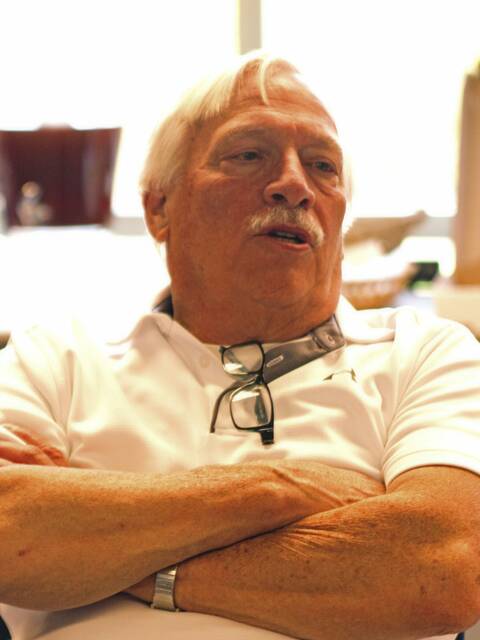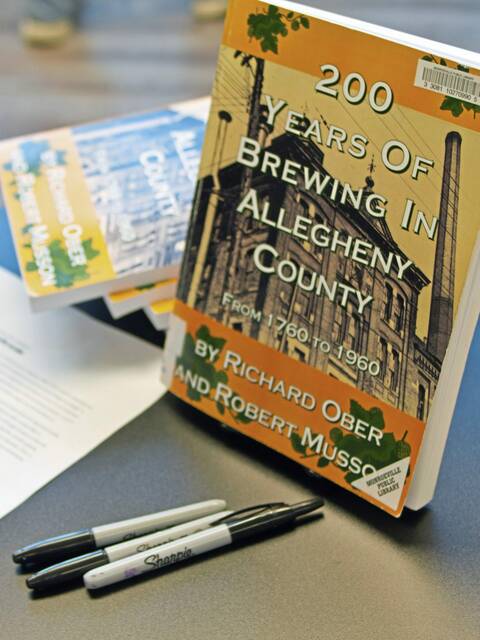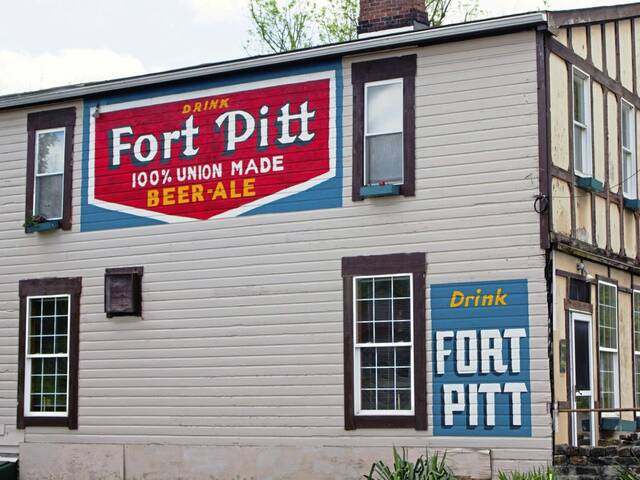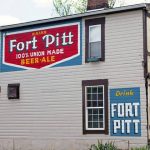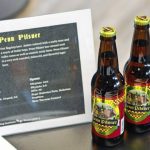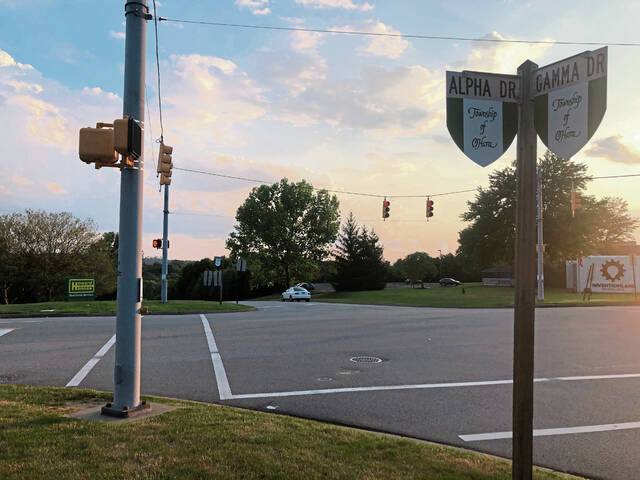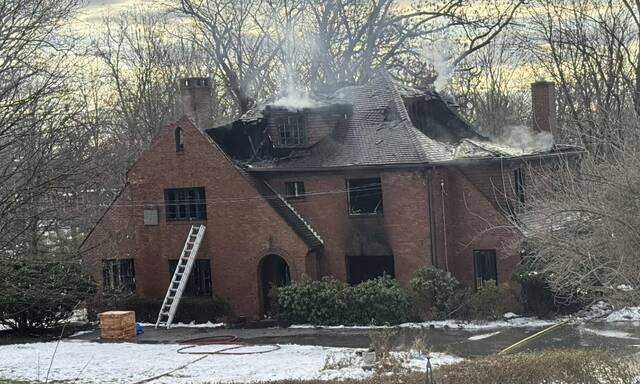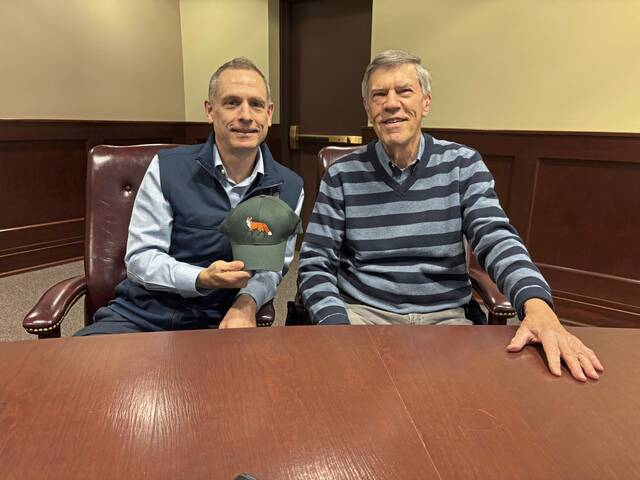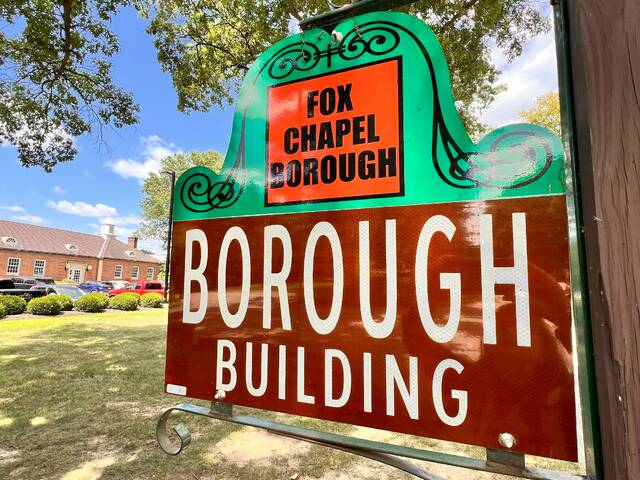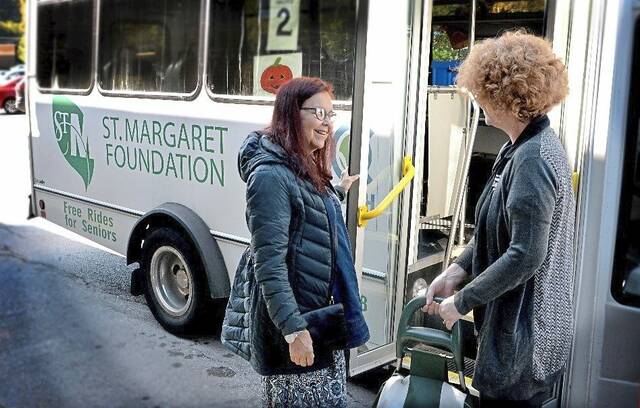Milwaukee’s nickname may be Brew City, but the title just as well could apply to another town.
“I know Pittsburgh had more breweries,” Richard Ober said, and he’s done the research to prove it.
With “200 Years of Brewing in Allegheny County,” Ober and co-author Robert Musson compiled a comprehensive — and in terms of numbers, staggering — account of the various operations that rolled out the barrels.
And because the book basically covers 1760 through 1960, it doesn’t include the proliferation of 21st-century craft breweries.
Ober presented associated facts, figures and stories during a May 5 program at Monroeville Public Library, augmented by a slideshow featuring hundreds of rare images of people, places and memorabilia pertaining to regional beer production.
Some of the brewers of yesteryear share his surname.
“The Ober family goes back in the brewing industry all the way to 1860,” Richard said. “Until I was in my 30s, I never even knew that my family was in the brewing business. I always knew my grandfather worked for Pittsburgh Brewing Co., but I never knew it went back.
“One day, we were driving past the old Penn Brewery, and my dad said, ‘You know, we used to own that.’ ”
In fact, members of the family in the late 19th century had a couple of brewing companies in that same part of Troy Hill: F.L. Ober & Brother and Eberhardt & Ober. And within walking distance of each were operations with names such as Seidel, Heckleman, Weissert, Lutz, Hippley and Apple.
After Richard Ober learned about his ancestors’ holdings, “I complained that they never saved any of the old stuff. My dad said there was so much of that lying around that nobody paid any attention to it,” he said.
Similar attitudes seem to have prevailed when breweries went out of business, as authentic collectibles — signs, lithographs, serving trays, even a Henry Ober shaving mug — can be scarce to the point of uniqueness.
And the pieces are priced accordingly.
“Some people pay thousands of dollars for one sign,” Ober said, providing a warning about counterfeits.
‘Art Rooney was the money’
He provided plenty of anecdotes, as well, including the link between an especially revered Pittsburgher and the short-lived, post-Prohibition General Braddock Brewing Co.
“Everybody believed that was owned by Art Rooney, but it wasn’t,” Ober said about the man who founded the Steelers at around the same time. “Art Rooney was the money. It was his brother who owned it.”
In Millvale, the low-temperature lagering cave of C. Baeuerlein Brewing Co. later served another purpose.
“The president of the Pennsylvania Railroad back then used that as his office, because it was cool,” Ober explained. “He didn’t need air conditioning.”
At one time, Pittsburgh was home to several breweries with “Straub” in their names, differing from the Straub Brewery Inc. that operates to this day in Elk County. Ober’s family has a connection to that company’s founder.
“Peter Straub actually worked for my great-grandfather as a cooper. He left there and went to St. Marys,” Ober said, where he worked for Benzinger Spring Brewery, owned by a man named Francis Sorg. “He married his daughter and took over the brewery.
“That’s how this stuff used to work. A lot of brewmasters died young,” often victims of the kidney disease nephritis, from sampling copious amounts of their products, “and their wives married the next brewmaster.”
Chronologically, Ober and Musson’s book starts with the British Army Brewery, established at Fort Pitt during the French and Indian War, and wraps up by chronicling some of the region’s popular postwar producers, including Duquesne, Fort Pitt and, of course, Pittsburgh Brewing Co., now based in East Deer.
Suburban brewing
Along the way is information on brewers large and small, many located beyond the Pittsburgh city limits. Some examples:
• Chartiers Valley Brewing Co., incorporated March 18, 1901, in Carnegie. According to the book, the company’s signature brand was a lager called Nonpareil, and its plant closed at the onset of Prohibition in 1920.
• Adam Schmidt’s Brewery, which operated somewhere in Heidelberg from 1874 to 1879.
• Peter Young (Yund)’s Brewery in Etna “was known to have brewed as much as 60 barrels of beer monthly between 1862 and 1866.”
• Also in Etna was Michael Metzger’s business, where “court records show that he had sales of only $32,000 in 1890, making this simple one-story frame plant one of the region’s smallest breweries at the time.”
• Anchor Brewery, originally in Harrison and Tarentum, and then in Brackenridge after the borough’s 1901 founding.
“On May 3, 1921,” the book states, “the company discharged 56,000 gallons (roughly 1,800 barrels) of real beer on hand into the local sewer system, and only July 8, the process of liquidating the plant began.”
• Fort Pitt Brewing Co. started with its 1906 incorporation in Sharpsburg. Operations started two years later, with 65 employees and an annual capacity of 75,000 barrels.
The company survived Prohibition and by the late 1940s “was the king of not only Pittsburgh, but of all Pennsylvania beers for the only time in its history,” according to the book. But production ceased at the Sharpsburg plant in 1957, and much of it was razed during the next few years.
Portions survived, though, and today the Hitchhiker Brewery and Tap Room occupies a space to carry on the local tradition.



